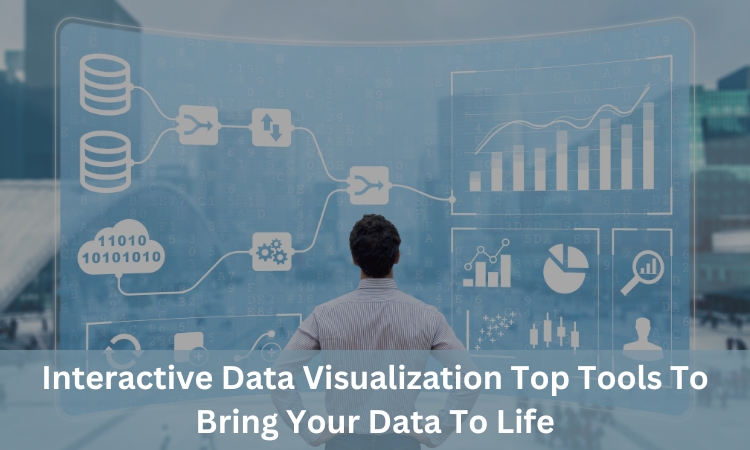1. Tableau
Tableau is a top data visualization platform, enabling users to design interactive, shareable dashboards with ease. It supports a wide range of data sources, making it suitable for various industries. Tableau’s drag-and-drop interface allows users to build visualizations effortlessly, even without programming knowledge.
Key Features
- User-Friendly Interface: Tableau’s intuitive design makes it accessible for beginners while offering advanced capabilities for experienced users.
- Real-Time Data Analysis: Users can connect to live data sources and visualize changes in real time, enabling prompt decision-making.
- Collaboration: Tableau’s cloud-based platform allows teams to share dashboards and insights easily, fostering collaboration across departments.
With its robust features and versatility, Tableau is an excellent choice for organizations looking to leverage data visualization for deeper insights.
2. Power BI
Microsoft Power BI is another powerful interactive data visualization tool that integrates seamlessly with other Microsoft products. It enables users to create visually stunning reports and dashboards with relative ease. Power BI is particularly popular among businesses that already utilize Microsoft’s ecosystem.
Key Features
- Integration with Microsoft Products: Power BI connects effortlessly with Excel, Azure, and other Microsoft applications, enhancing data accessibility.
- Custom Visualizations: Users can create custom visualizations using Power BI’s marketplace, tailoring dashboards to specific needs.
- Natural Language Query: The Q&A feature allows users to ask questions about their data in natural language, making insights more accessible to non-technical users.
Power BI’s integration capabilities and user-friendly features make it a go-to choice for businesses seeking to visualize their data effectively.
3. D3.js
For those who have some programming skills, D3.js is a powerful JavaScript library for creating interactive data visualizations. Unlike drag-and-drop tools, D3.js allows for complete customization and control over the visual representation of data. It’s ideal for developers looking to create unique and intricate visualizations.
Key Features
- Customization: D3.js enables developers to create tailored visualizations by manipulating the Document Object Model (DOM).
- Wide Range of Visualizations: From simple charts to complex interactive maps, D3.js can handle a vast array of visualization types.
- Community Support: With a robust community and extensive documentation, users can find ample resources to assist in their projects.
D3.js is perfect for developers who want to push the boundaries of data visualization and create truly bespoke interactive experiences.
4. Plotly
Plotly is a versatile tool that supports both Python and JavaScript for creating interactive visualizations. It is particularly popular in scientific and engineering fields due to its ability to produce high-quality, interactive plots. Plotly offers a user-friendly interface while also catering to those who want to customize their visualizations with code.
Key Features
- Interactive Graphs: Plotly’s graphs can be easily manipulated by users, allowing for a deeper exploration of the data.
- Integration with Programming Languages: Plotly works well with languages like Python, R, and MATLAB, making it a favorite among data scientists and engineers.
- Web-Based Sharing: Users can publish their visualizations online, facilitating easy sharing and collaboration.
With its blend of simplicity and advanced features, Plotly is an excellent choice for users seeking interactive visualizations across various disciplines.
5. Google Data Studio
Google Data Studio is a free tool that allows users to create interactive reports and dashboards using data from various Google products and third-party sources. Its intuitive interface and seamless integration with Google Analytics, Google Sheets, and other data sources make it an accessible option for businesses of all sizes.
Key Features
- Drag-and-Drop Interface: Google Data Studio’s user-friendly design enables users to create reports quickly and easily.
- Collaboration Tools: The ability to share reports and collaborate in real-time enhances teamwork and decision-making.
- Customizable Templates: Users can choose from a variety of templates or create their own, ensuring that their reports align with their branding.
Google Data Studio is ideal for businesses looking for a cost-effective solution to visualize their data while maintaining ease of use.
6. Qlik Sense
Qlik Sense is an advanced analytics platform that empowers users to create interactive dashboards and visualizations without requiring extensive technical skills. It utilizes an associative data model, allowing users to explore data in a flexible and intuitive manner.
Key Features
- Smart Search: Qlik Sense allows users to search across all data sources and find relevant information quickly.
- Data Storytelling: Users can create compelling narratives around their data, helping to communicate insights effectively.
- Responsive Design: Qlik Sense dashboards are responsive and can be accessed on various devices, ensuring insights are always available.
Qlik Sense’s user-centric design and powerful analytics capabilities make it a strong contender in the interactive data visualization space.

